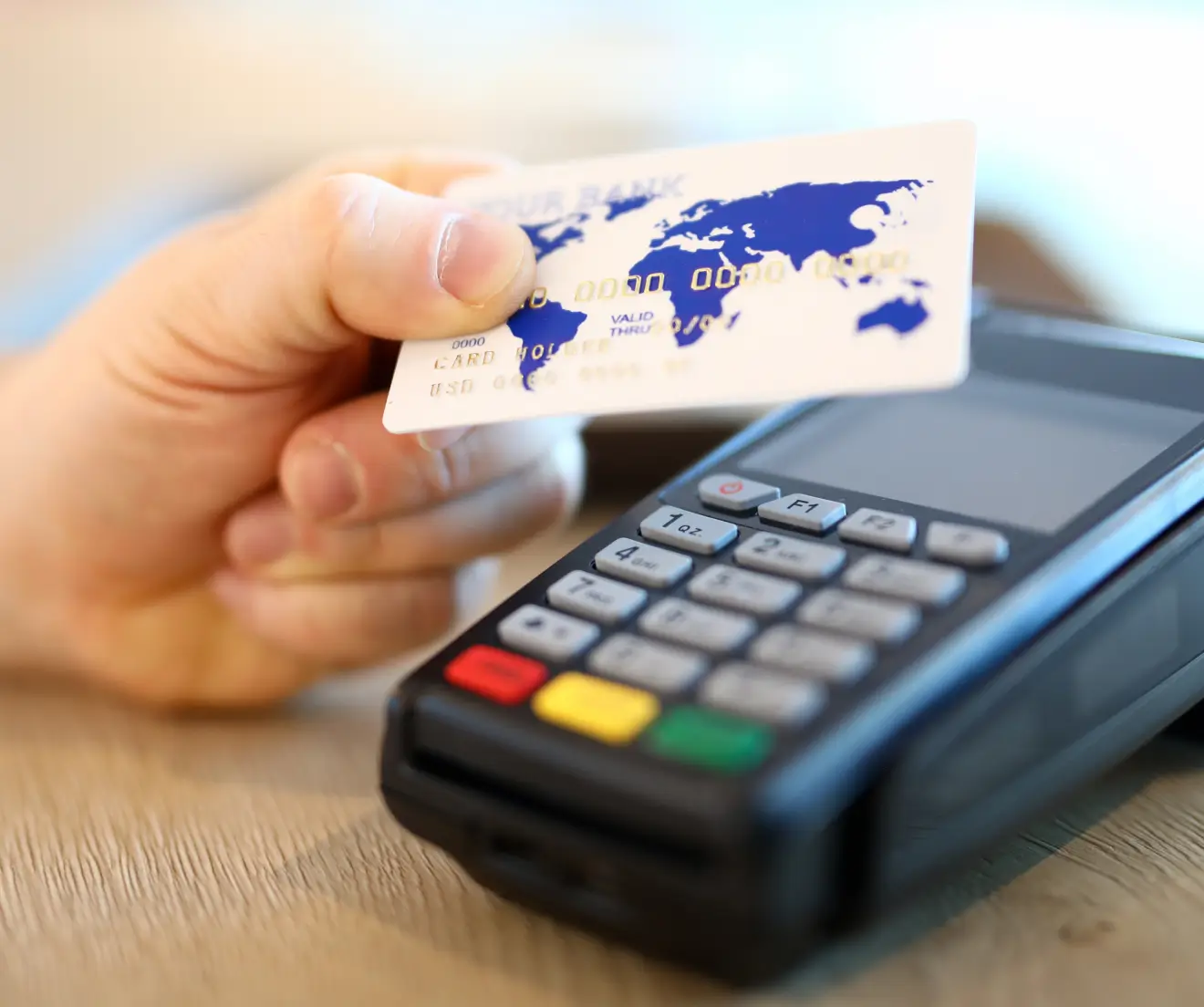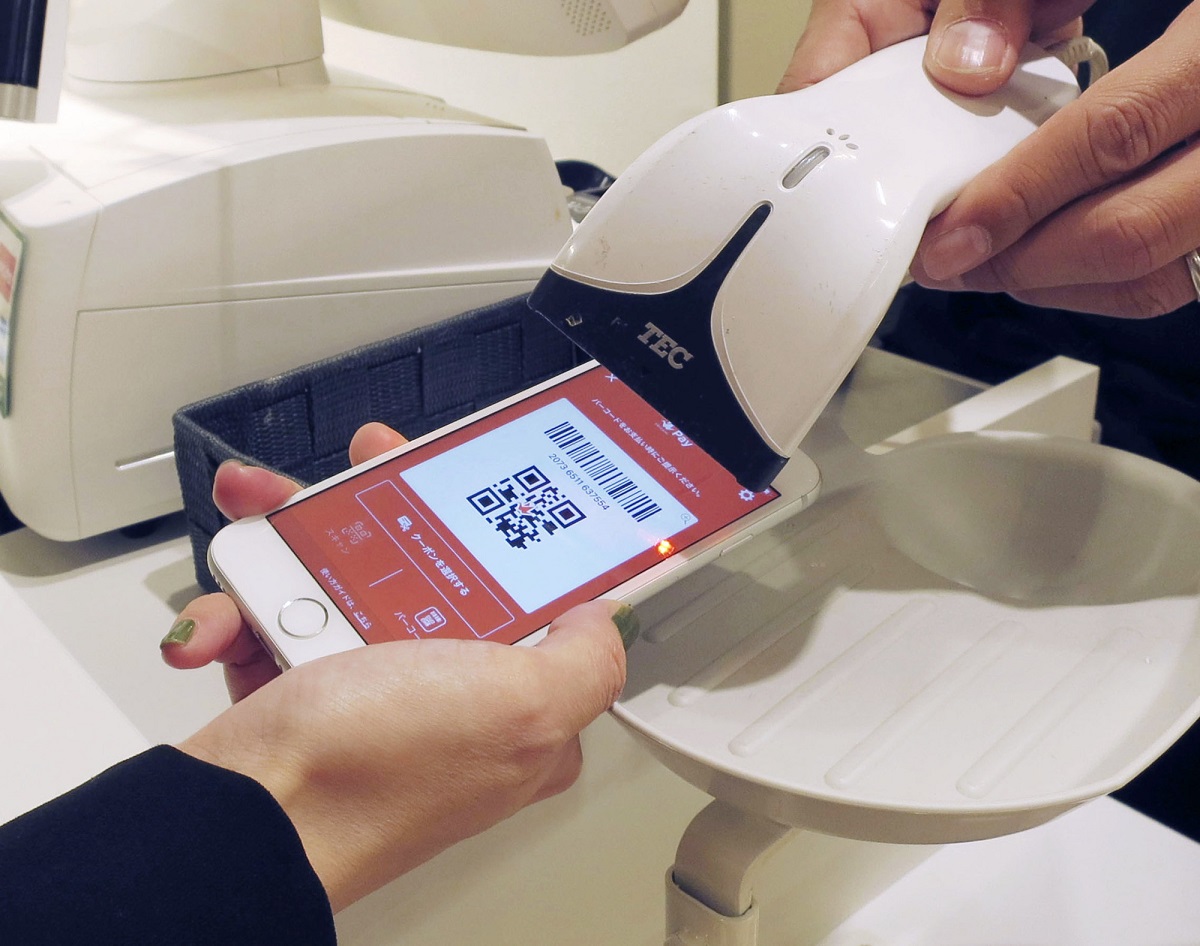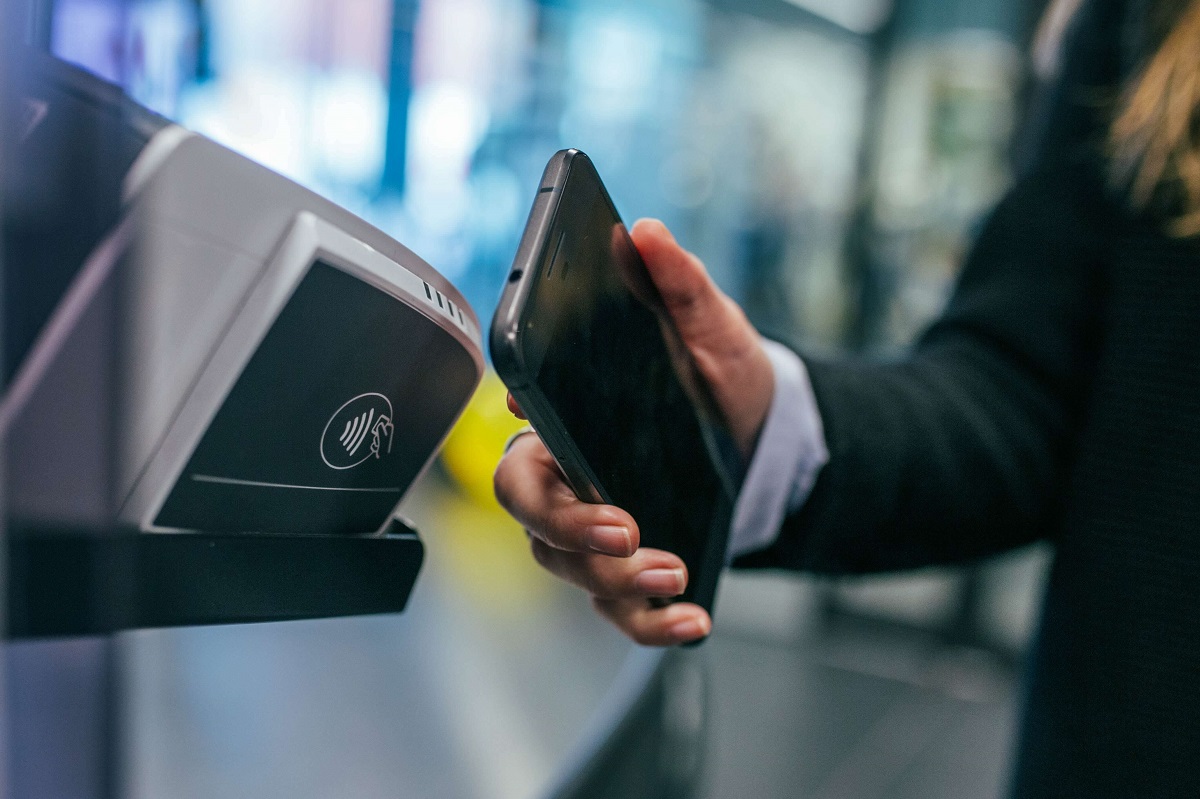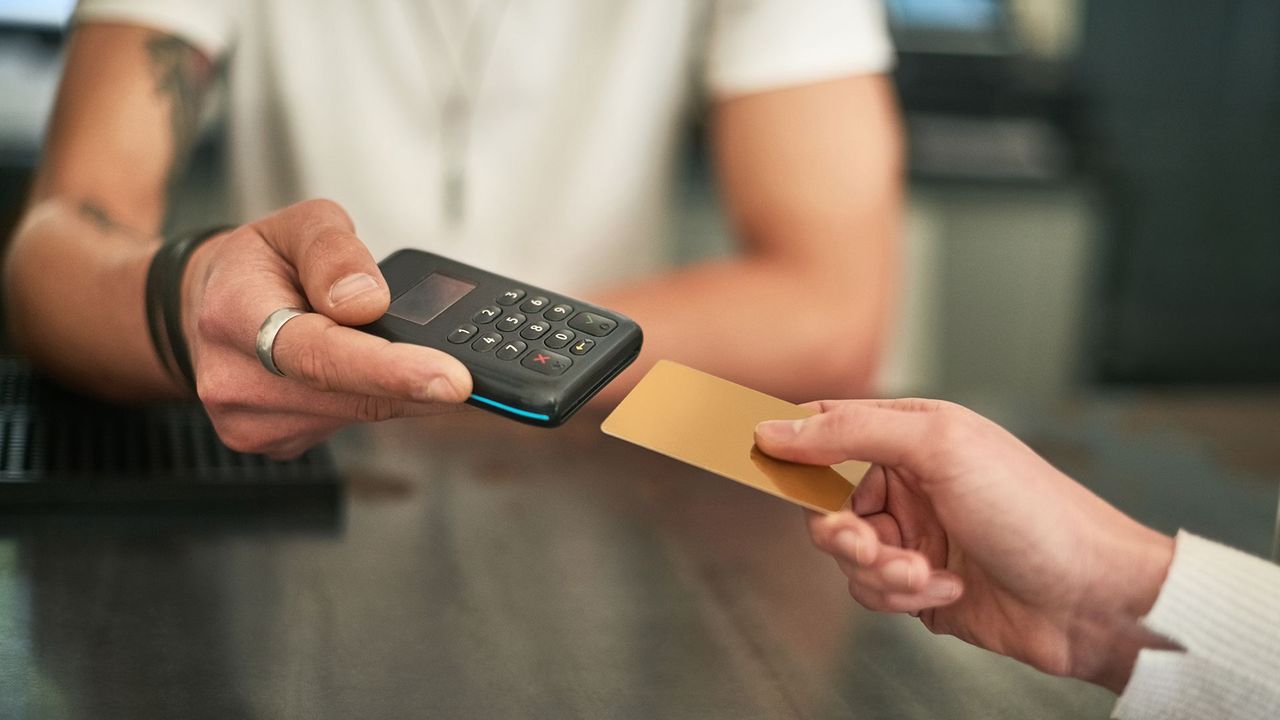Introduction
The advent of technology has revolutionized various aspects of our lives, including the way we conduct financial transactions. In recent years, cashless payment methods have gained immense popularity, offering convenience, security, and efficiency. One such method is the cashless ATM, which provides users with a seamless way to access funds without the need for physical cash.
A cashless ATM, also known as a point-of-sale (POS) terminal or an electronic funds transfer network (EFTN), is a digital payment solution that allows individuals to withdraw cash from their bank accounts or prepaid card balances through a non-cash transaction. Unlike traditional ATMs, cashless ATMs do not require physical cash handling by the merchant or the customer.
By understanding how cashless ATMs work, users can make informed decisions about their financial transactions. In this article, we will delve into the inner workings of cashless ATMs and explore their advantages and disadvantages.
What is a cashless ATM?
A cashless ATM is a type of electronic payment system that allows individuals to withdraw cash from their bank accounts or prepaid cards without the need for physical cash. It operates similarly to a traditional ATM but eliminates the need for cash handling by the merchant and the customer.
Cashless ATMs are typically found in retail establishments, convenience stores, and restaurants, providing customers with the option to withdraw cash as part of their point-of-sale transaction. Instead of receiving cash from the merchant, the customer receives a digital credit through the cashless ATM, which is deducted from their bank account or prepaid card balance.
These cashless ATMs are linked to a network of financial institutions and payment processors, allowing for seamless transactions and real-time fund transfers. The customer can choose the desired withdrawal amount and complete the transaction using their debit card, credit card, or prepaid card.
It’s important to note that while cashless ATMs offer the convenience of accessing cash without physical bills, they are not the same as traditional ATMs. Traditional ATMs dispense physical cash, whereas cashless ATMs only facilitate digital transfers.
How do cashless ATMs work?
Cashless ATMs operate through a series of steps that involve selecting a transaction, authentication and verification, processing the transaction, approval and completion, and receipt generation. Let’s explore each step in detail:
Step 1: Selecting a transaction: When making a purchase at a cashless ATM-enabled establishment, the customer informs the cashier that they would like to withdraw cash using the cashless ATM option. The cashier selects the transaction on the point-of-sale terminal, indicating the desired withdrawal amount.
Step 2: Authentication and verification: The cashless ATM prompts the customer to insert their debit card, credit card, or prepaid card into the terminal. The customer provides the necessary identification information, such as a PIN or signature, to authenticate the transaction. The cashless ATM verifies the cardholder’s eligibility and account balance.
Step 3: Processing the transaction: Once the authentication and verification are successful, the cashless ATM initiates the transaction process. It communicates with the customer’s financial institution or payment processor to request the transfer of funds from the customer’s account to the establishment’s account. This process occurs electronically and securely through encrypted communication.
Step 4: Approval and completion of the transaction: Upon receiving approval from the financial institution or payment processor, the cashless ATM completes the transaction. The requested withdrawal amount is deducted from the customer’s account balance, and the equivalent digital credit is added to the establishment’s account. This ensures a seamless transfer of funds without the need for physical cash.
Step 5: Receipt generation: Lastly, the cashless ATM generates a receipt for the customer as proof of the transaction. The receipt typically includes details such as the transaction amount, the establishment’s name, and the date and time of the transaction.
It’s important to note that the availability of cashless ATMs may vary depending on the establishment and the customer’s financial institution. Not all establishments or financial institutions may offer this service, so it’s always a good idea to inquire beforehand.
Step 1: Selecting a transaction
When using a cashless ATM, the first step in the process is selecting the transaction. This step occurs when a customer makes a purchase at a cashless ATM-enabled establishment and expresses their desire to withdraw cash using the cashless ATM option.
The transaction selection takes place at the point-of-sale terminal, where the cashier or the customer initiates the process. The customer indicates the desired withdrawal amount, typically in addition to the purchase amount, and the cashier selects the appropriate transaction on the terminal.
For example, imagine a customer visiting a local convenience store and deciding to purchase groceries while also needing cash for some expenses. The customer informs the cashier that they would like to withdraw cash along with their purchase. The cashier then begins the process by selecting the appropriate transaction option on the cashless ATM-enabled point-of-sale terminal.
The transaction selection typically involves entering the withdrawal amount into the terminal or selecting pre-set options, such as $20, $50, or $100. This step allows the establishment to identify the customer’s intention to utilize the cashless ATM feature and serves as a starting point for the subsequent steps of the transaction process.
It’s important for customers to remember that the withdrawal amount selected here will determine the amount of digital credit they receive later in the process. Care should be taken to ensure that the withdrawal amount aligns with their cash needs.
Cashless ATMs not only provide customers with the convenience of accessing cash during their purchases but also offer an added level of flexibility. This step allows customers to combine their purchases with cash withdrawals, eliminating the need to visit a separate ATM for cash needs. It streamlines the process, making it more efficient for both customers and establishments.
Now that we have understood the first step of selecting a transaction, let’s move on to the next step in the process: authentication and verification.
Step 2: Authentication and Verification
After selecting the transaction at a cashless ATM-enabled establishment, the next step is authentication and verification. This step ensures the security and validity of the transaction by confirming the customer’s identity and verifying their eligibility to withdraw cash.
During the authentication and verification step, the cashless ATM prompts the customer to insert their debit card, credit card, or prepaid card into the terminal. This allows the system to access the necessary information linked to the card, such as account details and transaction authorization protocols.
The customer is then required to provide additional identification information to authenticate the transaction. This can be in the form of a personal identification number (PIN), a signature, or even biometric verification like a fingerprint scan, depending on the security measures implemented by the cashless ATM provider.
The cashless ATM uses this information to verify the customer’s identity and eligibility for a cash withdrawal. It communicates with the customer’s financial institution or payment processor to validate the cardholder’s account status, available balance, and any withdrawal restrictions associated with the card.
This authentication and verification process ensures that only authorized individuals can access cash through the cashless ATM. It helps prevent fraudulent transactions and enhances the security of the overall system.
It’s worth noting that cashless ATMs prioritize the protection of customer information by utilizing encryption protocols and secure communication channels. This way, sensitive cardholder data is safeguarded from unauthorized access.
If the customer’s identification and account verification are successful, the cashless ATM proceeds to the next step of the transaction process. Otherwise, if any discrepancies or issues arise during the authentication and verification, the transaction may be declined, and the customer will be notified accordingly.
The authentication and verification step serves as an essential security measure to ensure the integrity of cashless ATM transactions. By confirming the customer’s identity and eligibility, the system provides a reliable and secure method for accessing cash through digital means.
Now that we have completed the second step, let’s move on to the next phase: processing the transaction.
Step 3: Processing the Transaction
Once the authentication and verification step is successfully completed at a cashless ATM, the system proceeds to process the transaction. This step involves the communication and coordination between the cashless ATM, the customer’s financial institution or payment processor, and the establishment where the transaction is taking place.
After ensuring the customer’s identity and eligibility, the cashless ATM initiates the transaction process by reaching out to the relevant financial institution or payment processor associated with the customer’s card. The purpose of this communication is to request the transfer of funds from the customer’s account to the establishment’s account.
Through a secure and encrypted channel, the cashless ATM transmits the necessary transaction information, such as the withdrawal amount and the establishment’s details, to the financial institution or payment processor. This information helps facilitate the transfer of funds in real-time.
The financial institution or payment processor verifies the transaction details and checks the availability of funds in the customer’s account. They authenticate the transaction, ensuring that it meets the necessary security and fraud prevention measures.
If the customer has sufficient funds and the transaction is deemed valid, the financial institution or payment processor authorizes the transfer of funds. They communicate the approval back to the cashless ATM, allowing it to proceed with initiating the transfer.
During the processing of the transaction, the cashless ATM ensures that the necessary data encryption and security protocols are followed to protect the customer’s sensitive information. This includes utilizing strong encryption algorithms and adhering to industry-standard security practices.
Once the financial institution or payment processor approves the transfer, the cashless ATM deducts the requested withdrawal amount from the customer’s account. Simultaneously, the equivalent digital credit is added to the establishment’s account, ensuring a seamless transfer of funds without the need for physical cash.
The processing of the transaction occurs in real-time, allowing for immediate availability of funds to the customer and ensuring a smooth payment experience.
Once the transaction is successfully processed, the cashless ATM proceeds to the next step: approval and completion of the transaction.
Step 4: Approval and Completion of the Transaction
After the processing of the transaction in a cashless ATM, the next step is the approval and completion of the transaction. This phase involves the final authorization and confirmation of the withdrawal, ensuring that the requested amount is deducted from the customer’s account and credited to the establishment.
Once the cashless ATM receives the approval from the financial institution or payment processor, it moves forward to complete the transaction. The system confirms that the requested withdrawal amount is within the available balance of the customer’s account, taking into consideration any withdrawal limits or restrictions.
If the withdrawal amount is approved, the cashless ATM deducts the specified amount from the customer’s account balance. At the same time, it adds the equivalent digital credit to the establishment’s account, making the funds available to the establishment for immediate use or further processing.
This approval and completion of the transaction occur in real-time to provide a prompt and seamless experience for both the customer and the establishment. It ensures that the funds are transferred accurately and efficiently, allowing for the swift continuation of the payment process.
During this step, the cashless ATM generates detailed transaction logs and records, capturing essential information such as the transaction amount, date, time, and other relevant data. This documentation serves as a record for both the customer and the establishment, providing transparency and accountability.
Furthermore, the cashless ATM may provide notifications or receipts to the customer and the establishment, indicating the successful completion of the transaction. These receipts typically include details such as the transaction amount, the establishment’s name or identifier, and the date and time of the transaction. It serves as proof of the completed transaction and can be used for reconciliation or reference purposes.
By obtaining the final approval and completing the transaction, cashless ATMs offer a reliable and efficient method for accessing funds without the need for physical cash. This process eliminates the hassle of cash handling while ensuring immediate availability of funds for the customer and the establishment.
Now that we have reached the completion of the transaction, let’s proceed to the final step: receipt generation.
Step 5: Receipt Generation
After the approval and completion of the transaction at a cashless ATM, the final step is the generation of a receipt. This step provides both the customer and the establishment with a tangible record of the transaction details for reference and reconciliation purposes.
Upon the successful completion of the transaction, the cashless ATM initiates the generation of a receipt. The receipt typically includes essential information such as the transaction amount, the establishment’s name or identifier, the date, and the time of the transaction.
The receipt is usually printed on thermal paper or displayed digitally on a screen, depending on the specific setup of the cashless ATM system. In some cases, customers may also have the option to receive an email or a text message with an electronic copy of the receipt.
The receipt serves as proof of the completed transaction, allowing the customer to have a record of the withdrawal amount and the associated purchase, if applicable. It can be particularly useful for tracking expenses, budgeting, or ensuring accurate account reconciliation.
For the establishment, the receipt provides documentation of the digital credit received through the cashless ATM. They can use the receipt for maintaining transaction records, accounting purposes, or auditing procedures.
Additionally, the receipt may include additional details such as a transaction reference number, the initials or name of the cashier or operator, or any promotional messages or offers. These additional elements depend on the specific features and customizations of the cashless ATM system.
The generated receipt should be carefully reviewed by both the customer and the establishment to confirm its accuracy and ensure that all relevant transaction details are included. In case of any discrepancies or issues, it is recommended to contact the cashless ATM provider or the establishment for assistance or clarification.
By providing a receipt, cashless ATMs offer transparency and accountability in the transaction process. It allows both customers and establishments to have a tangible record of the transaction details, promoting trust and providing a reference point for future inquiries or follow-ups if needed.
With the completion of the receipt generation, we have reached the end of the transaction process at a cashless ATM. Let’s summarize the advantages and disadvantages of cashless ATMs.
Advantages of Cashless ATMs
Cashless ATMs offer numerous advantages to both customers and establishments, revolutionizing the way financial transactions are conducted. Let’s explore the benefits of using cashless ATMs:
Convenience: Cashless ATMs provide the convenience of accessing cash without the need to visit a separate ATM. Customers can withdraw cash as part of their point-of-sale transaction, streamlining the process and saving time.
Security: Cashless ATMs enhance security by eliminating the need for physical cash handling. Customers no longer have to carry large amounts of cash, reducing the risk of theft or loss. Additionally, the encryption protocols and secure communication channels utilized by cashless ATMs protect customer information.
Efficiency: Cashless ATMs offer real-time fund transfers, ensuring that the transaction is processed promptly. Customers can access their funds immediately, while establishments benefit from instant availability of credited funds for further processing or use.
Flexibility: Cashless ATMs provide customers with the flexibility to withdraw cash as per their needs during a purchase. It eliminates the hassle of finding an ATM nearby or carrying extra cash, allowing customers to have access to funds conveniently.
Integration with Payment Systems: Cashless ATMs seamlessly integrate with existing payment systems in establishments. They can be easily incorporated into the point-of-sale terminals, providing a comprehensive payment solution for customers.
Reduced Cost and Maintenance: Cashless ATMs reduce costs for establishments as there is no need to handle physical cash, reducing the risks associated with cash management. Furthermore, the maintenance requirements for cashless ATMs are often lower compared to traditional ATMs.
Transaction Records: Cashless ATMs generate detailed transaction records and receipts for both customers and establishments. This documentation helps with tracking expenses, budgeting, and maintaining accurate records for accounting or auditing purposes.
Accessibility: Cashless ATMs can be located in various establishments, providing access to cash in areas where traditional ATMs may not be readily available. It increases the accessibility of cash withdrawal options for customers.
These advantages make cashless ATMs an attractive alternative to traditional ATMs, offering a seamless and efficient transaction experience for both customers and establishments.
Now that we have explored the advantages of cashless ATMs, let’s delve into the potential disadvantages that should be considered.
Disadvantages of Cashless ATMs
While cashless ATMs offer numerous advantages, there are also some potential disadvantages that should be taken into consideration. Let’s explore the downsides of using cashless ATMs:
Limited Availability: Cashless ATMs may not be as widely available as traditional ATMs. Some establishments may not have the infrastructure or partnerships in place to support cashless ATM transactions, limiting the accessibility for customers.
Dependence on Technology: Cashless ATMs rely heavily on technology and network connectivity. In the event of technical glitches, power outages, or network issues, the availability and functionality of cashless ATMs may be affected, hindering cash access for customers.
Transaction Fees: Cashless ATMs may charge transaction fees, which can vary depending on the cashless ATM provider, the financial institution, or the establishment. These fees can add up, especially for frequent cash withdrawals, potentially impacting the overall cost-effectiveness of using cashless ATMs.
Withdrawal Limits: Some cashless ATMs may have withdrawal limits imposed by the financial institution or payment processor. Customers may face restrictions on the maximum amount they can withdraw in a single transaction, potentially inconveniencing those who require larger cash amounts.
Reliance on Electronic Systems: Cashless ATMs rely on electronic systems and networks, making them vulnerable to potential security breaches or cyberattacks. While cashless ATMs employ security measures, customers and establishments need to be aware of the risks associated with electronic transactions.
Customer Education: Cashless ATMs may require customers to familiarize themselves with the specific procedures and features of the system, such as selecting the transaction, authentication, and verifying the transaction. Adequate customer education is crucial to ensure a smooth and trouble-free cash withdrawal experience.
Compatibility Issues: Cashless ATMs must be compatible with the customer’s payment cards and the financial institution or payment processor’s system. Incompatibility issues may arise if the customer has a card that is not supported by the cashless ATM provider or if the financial institution does not participate in the cashless ATM network.
While the disadvantages highlighted above exist, advancements in technology and increasing adoption of cashless payment systems are gradually addressing these issues, making cashless ATMs more accessible and convenient for customers.
Now that we have examined both the advantages and disadvantages of cashless ATMs, we can appreciate a comprehensive understanding of this digital payment solution.
Conclusion
Cashless ATMs have transformed the way we access cash by offering a convenient and secure alternative to traditional ATMs. These digital payment solutions streamline the cash withdrawal process, allowing customers to withdraw cash as part of their point-of-sale transactions. By understanding how cashless ATMs work, customers can make informed decisions regarding their financial transactions.
Throughout the transaction process, customers select the desired transaction, authenticate their identity, and verify their eligibility. The cashless ATM then processes the transaction by communicating with the customer’s financial institution or payment processor to transfer the funds. Once the transaction is approved, the cashless ATM completes the transaction, deducting the withdrawal amount from the customer’s account and adding digital credit to the establishment’s account. A receipt is generated, providing both parties with a record of the transaction details.
Cashless ATMs offer several advantages, including convenience, security, efficiency, and integration with existing payment systems. They eliminate the need for physical cash handling, reducing the risk of theft or loss. However, it’s important to consider the limitations of cashless ATMs, such as limited availability, transaction fees, and dependence on technology.
In conclusion, cashless ATMs provide a valuable solution for accessing cash without the need for physical bills. While they may not be universally available and come with certain drawbacks, the convenience and security they offer make them a compelling option for individuals and establishments. As technology continues to advance, we can expect to see further development and improvement in cashless ATM systems, making them an integral part of our cash management and payment processes.

























